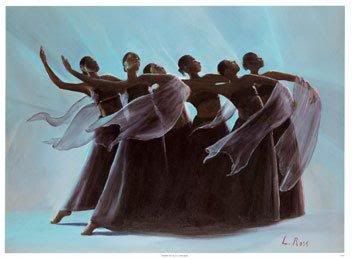
Assignment #5 – Theology of Worship
February 9, 2007
February 9, 2007
The including of artistic elements in worship has met with some acceptance and also with some concern. The problem has been whether artistic elements are biblical and necessary in the worship service. If one looks at the Bible, elements of artistic elements can be seen in worship.
The first example is when the children of Israel had safely crossed the Red Sea and began to sing a song of praise to God. In Exodus 15:20 it states, “Then Miriam the prophetess, Aaron’s sister, took a tambourine in her hand, and all the women followed her, with tambourines and dancing”. Some have argued that this was not the same as today’s praise dance because it was a spontaneous dancing before the Lord, while today’s dancing is planned. However, we cannot overlook this important fact, while we do not see this as a planned dance, we can see they were comfortable expressing themselves in the dance and felt it was not dishonoring to God. Dancing was also done to musical accompaniment and was done as a celebration of a joyous occasion (examples Psalm 30:11, Eccl. 3:4, Luke 15:25, Psalm 249:3, 150:4). Dancing was also done to celebrate military victories (1 Samuel 18:26). Women were the ones mostly listed in scripture as dancing, but we also have David as he danced before the Lord with all his might (2 Samuel 6:14).
I believe one of the greatest artistic elements was the work of the tabernacle itself. In 1 Kings the 6 chapter, it gives the details of the building of the tabernacle. In order for this to be accomplished, those skilled in the use metal and woods for example were allowed to come and work on the tabernacle. The tabernacle had to be a visual reminder of the splendor of God. So each time the people saw it, they could be reminded of the beauty and wonder of God. How can we view this today? It let’s us know that we should allow all people to come and use their talents for the building of the kingdom. The artisan should be allowed to create in paint, wood or metal so they help the people visually connect with some of the attributes of the Lord.
Lastly, drama within the worship services, does it have a place as well? I can only go to one person to answer this questions, Jesus. Jesus when he taught to the people he could have given straight answers to the questions asked him, but he chose to paint a picture with a story. He used parables to teach his lessons. In Matthew 21:23, for example, the priests ask a question of Jesus about what authority he has to do these things. Jesus turns their question around, and then he begins to teach in parables. Some would say that is different from drama. It does, however show that Jesus would use other means of bringing home truth about a subject. It is the same with drama. A storyteller will tell a story that relates to the everyday, yet in the process can reveal deep truth about biblical matters, which can make individuals think.
It is important for the church today to look at the possibilities of using artistic elements within the worship service so that individuals utilize all there senses in the worship of the Lord and allowed to have the freedom to respond to his presence. That is what is most important in reading and understanding the word of God. The people had freedom to praise and yet they were aware of the importance of worshipping God’s way. Today we can worship using artistic elements in the service and still be worshipping God, as he requires.
No comments:
Post a Comment